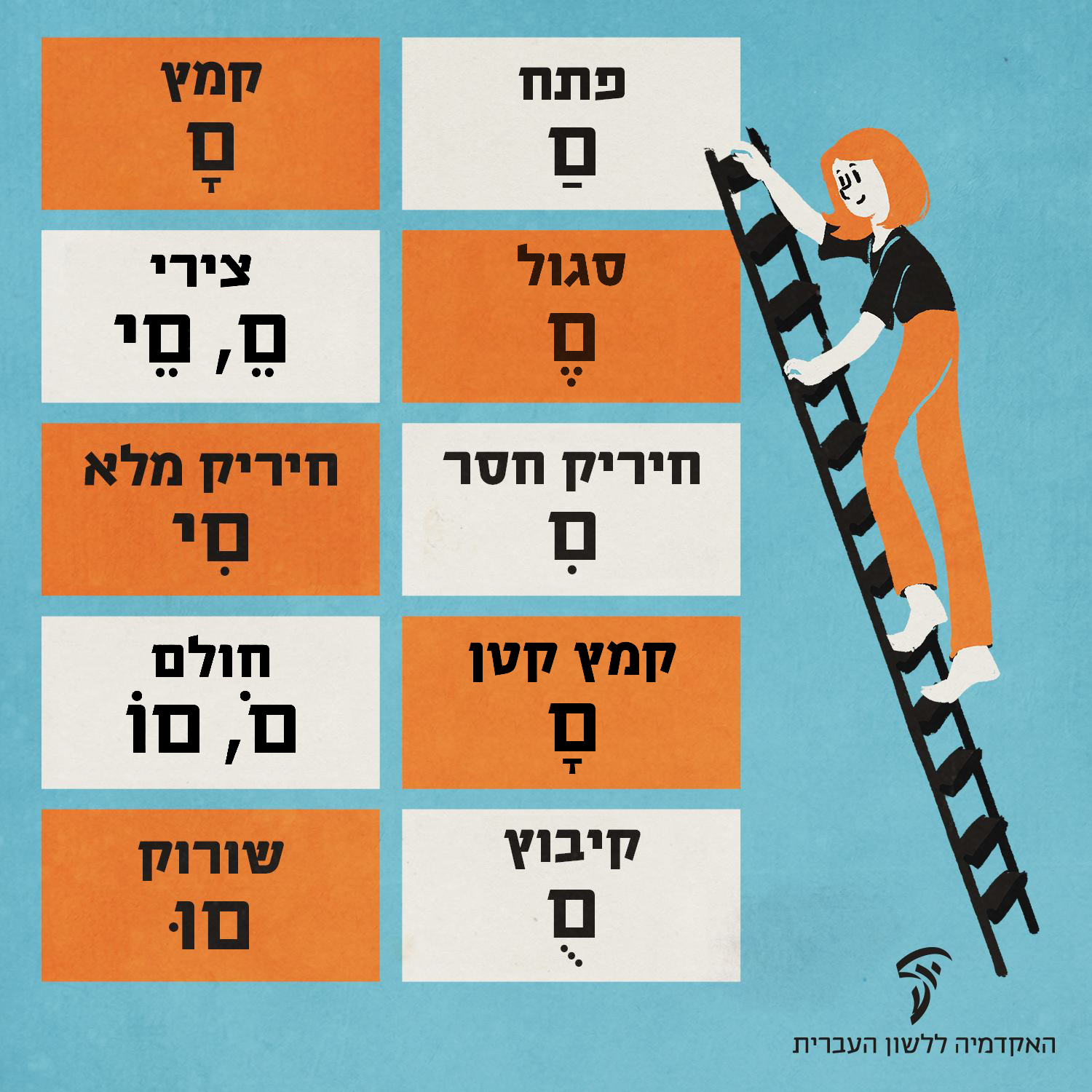
In contemporary Hebrew, each word has two standard written forms: a vocalized form and an unvocalized form. Vocalized forms, which often have a leaner spelling, overlay the letters with nikkud (pointing) that notates vowels, consonant doubling, and more; unvocalized forms consist of letters only. Nowadays, poetry and children’s books are generally vocalized throughout; reading primers and materials for Hebrew students may be vocalized as well. Sacred texts are often vocalized, too, but their spelling and vocalization do not necessarily match today’s standard vocalized forms, instead adhering to received spelling (and, at least in the case of the Bible, received vocalization). Elsewhere, unvocalized text predominates.

Modern Hebrew’s standard vocalized forms of Modern Hebrew follow a “grammatical” spelling system developed by David Yellin and adopted in the early days of our predecessor, the Language Committee. This spelling system makes modest use of the letters vav (waw) and yod as vowel indicators (every Hebrew letter fundamentally represents a consonant; a few letters may also indicate a vowel), much as classical Biblical Hebrew does. Overlaid on this “grammatical” spelling is the same set of nikkud signs found in vocalized Hebrew Bibles for over a millennium, applied according to vocalization rules extrapolated from Biblical nikkud.1
Standardizing the spelling of unvocalized Hebrew proved a thornier challenge. Both the Language Committee and the Academy held extensive deliberations on the subject. One proposal called for a letter to represent each vowel sound of current spoken Hebrew; it was rejected because it would have added letters to the Hebrew alphabet. The Academy ultimately chose a moderate approach, using vav to indicate u or o and yod to indicate i or e more widely than in vocalized forms but not as widely as in the “fullest” attested spellings. (Extant unvocalized texts span millennia and vary significantly in the extent to which they use letters to indicate vowels.) The rules distinguish consonantal use of vav and yod by means of double vav and double yod (respectively) in many situations. In 2017 the Academy revised the rules, further expanding the circumstances for using vav and yod as vowel indicators.
Explore the Academy’s spelling rules for unvocalized Hebrew (in Hebrew):
- 1The accepted nikkud of the Bible reflects the pronunciation tradition of those who invented it: a family of scribes who lived in Tiberias during the latter part of the first millennium CE. Other nikkud systems, developed elsewhere, reflect different pronunciation traditions of Hebrew. Although the Tiberian nikkud long ago prevailed and became the accepted written standard in Bibles across the Jewish world, other pronunciation traditions survived, preserved in the oral reading of the Bible and of other sacred texts. In several respects the pronunciation of Israeli Hebrew does not align with Tiberian nikkud, partly because of the influence of other pronunciation traditions. For instance, Tiberian nikkud distinguishes seven vowel qualities, whereas contemporary Israeli Hebrew speech distinguishes only the five vowel qualities of the Sephardic pronunciation tradition: a, e, i, o, u. Such disparities make the nikkud less intuitive; but Jewish communities have been coping with this challenge for hundreds of years, and instituting any other vocalization system would have constituted a major departure from longstanding orthographic norms. ↩︎

